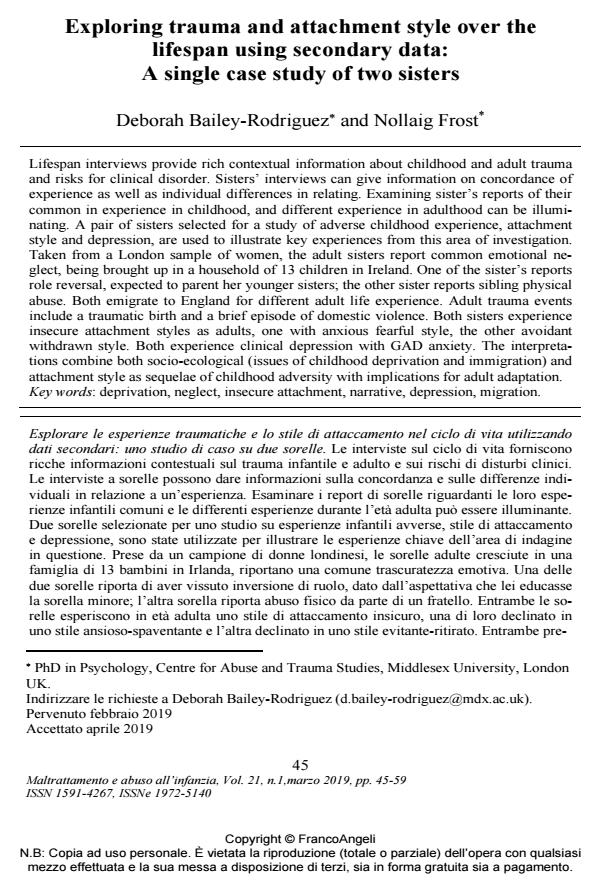Exploring trauma and attachment style over the lifespan using secondary data: A single case study of two sisters
Journal title MALTRATTAMENTO E ABUSO ALL’INFANZIA
Author/s Deborah Bailey-Rodriguez, Nollaig Frost
Publishing Year 2019 Issue 2019/2
Language English Pages 15 P. 45-59 File size 212 KB
DOI 10.3280/MAL2019-002004
DOI is like a bar code for intellectual property: to have more infomation
click here
Below, you can see the article first page
If you want to buy this article in PDF format, you can do it, following the instructions to buy download credits

FrancoAngeli is member of Publishers International Linking Association, Inc (PILA), a not-for-profit association which run the CrossRef service enabling links to and from online scholarly content.
Lifespan interviews provide rich contextual information about childhood and adult trauma and risks for clinical disorder. Sisters’ interviews can give information on concordance of experience as well as individual differences in relating. Examining sister’s reports of their common in experience in childhood, and different experience in adulthood can be illuminating. A pair of sisters selected for a study of adverse childhood experience, attachment style and depression, are used to illustrate key experiences from this area of investigation. Taken from a London sample of women, the adult sisters report common emotional neglect, being brought up in a household of 13 children in Ireland. One of the sister’s reports role reversal, expected to parent her younger sisters; the other sister reports sibling physical abuse. Both emigrate to England for different adult life experience. Adult trauma events include a traumatic birth and a brief episode of domestic violence. Both sisters experience insecure attachment styles as adults, one with anxious fearful style, the other avoidant withdrawn style. Both experience clinical depression with GAD anxiety. The interpretations combine both socio-ecological (issues of childhood deprivation and immigration) and attachment style as sequelae of childhood adversity with implications for adult adaptation.
Keywords: Deprivation, neglect, insecure attachment, narrative, depression, migration.
Deborah Bailey-Rodriguez, Nollaig Frost, Exploring trauma and attachment style over the lifespan using secondary data: A single case study of two sisters in "MALTRATTAMENTO E ABUSO ALL’INFANZIA" 2/2019, pp 45-59, DOI: 10.3280/MAL2019-002004